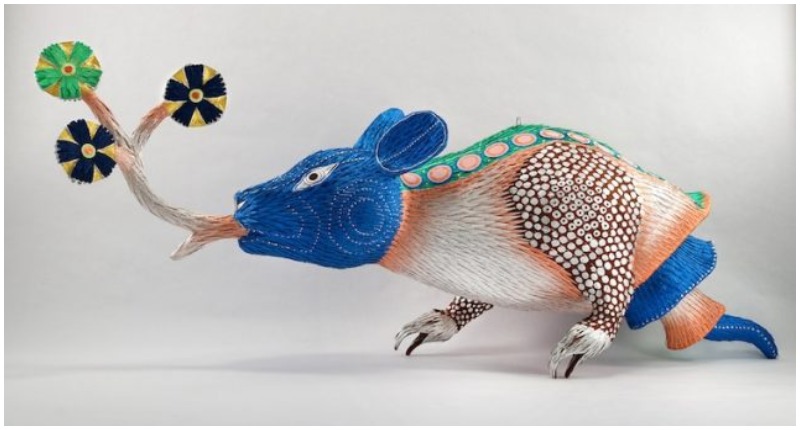They say that beauty is in the eye of the beholder, and an artist’s eye looks for beauty in unusual and unlikely places.
Roberto Benavidez is a contemporary artist from southern Texas whose art is a fusion of both his own roots and images from the distant past. He creates piñatas using monsters from medieval works of art, such as the work of Hieronymus Bosch, as their basis.
According to his website, he was interested in art from the time he was very young. With there being relatively limited opportunities for pursuing an education in art, he instead studied acting at Texas State University, earning his BFA.
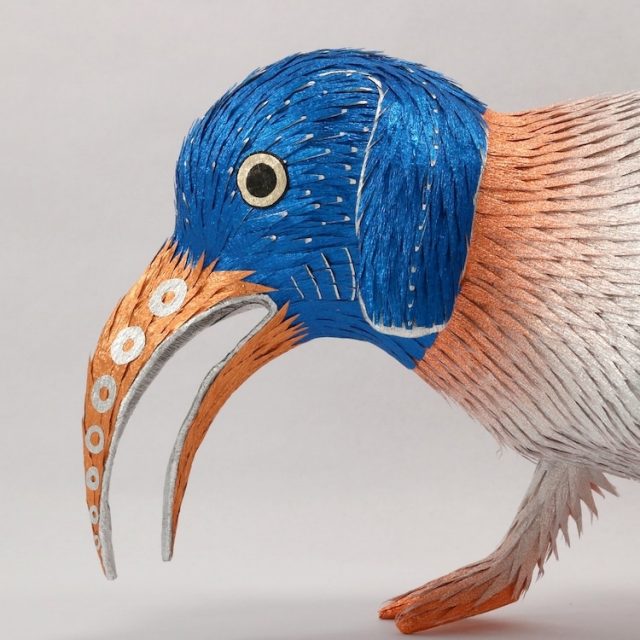
He spent several years acting in Texas but remained drawn to the world of fine art, so he left Texas and headed for California where he took classes at Pasadena City College to learn the skills he really wanted to master — sculpture, drawing, and painting.
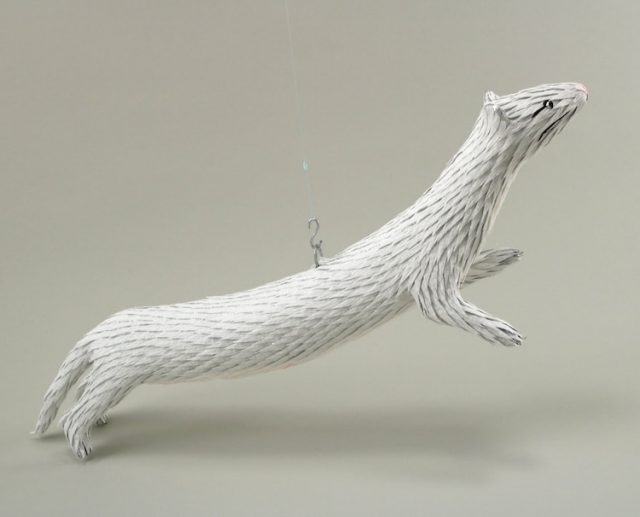
He even learned a bit about bronze casting. He describes himself as “half-breed, South Texan, queer, figurative sculptor specializing in the piñata form; playing on themes of race, sexuality, art, sin, humor, and beauty.”
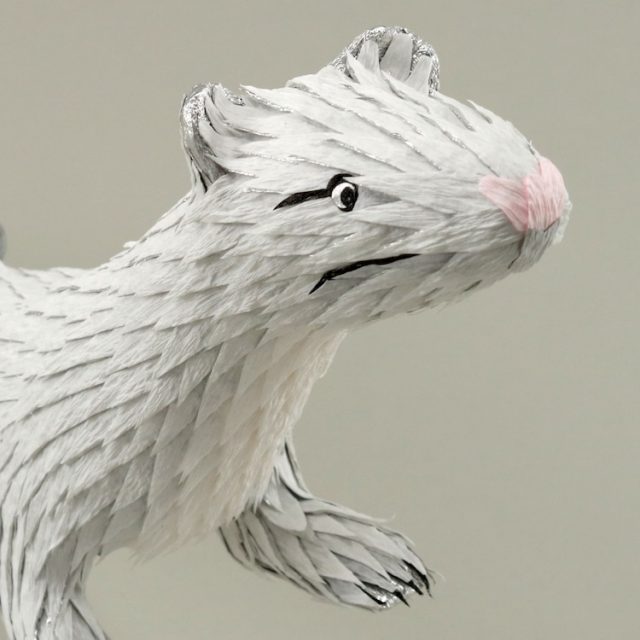
Those themes are clearly evident in Benavidez’s work. During an email interview with Hyperallergic, the artist remarked that sin was inherent in both piñatas and in Bosch’s Garden of Earthly Delights, so it seemed a good match to him.
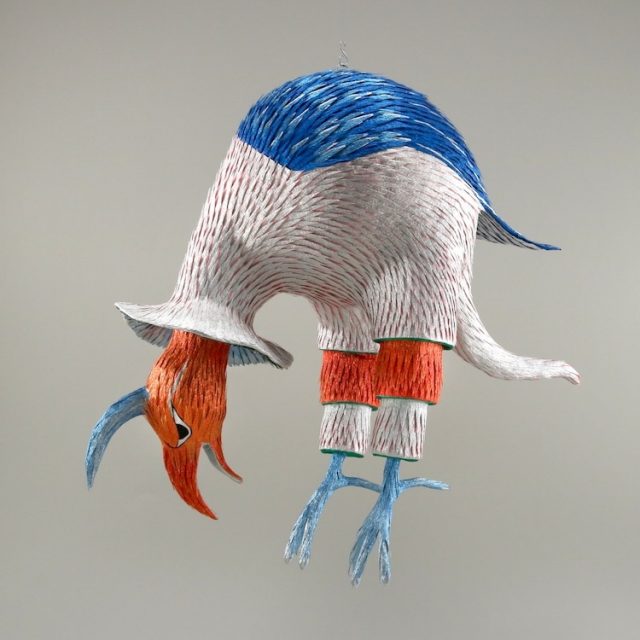
He said that the fusion of Mexican and European art forms felt very representative of him as a person and that he’s always been drawn to old painting techniques.
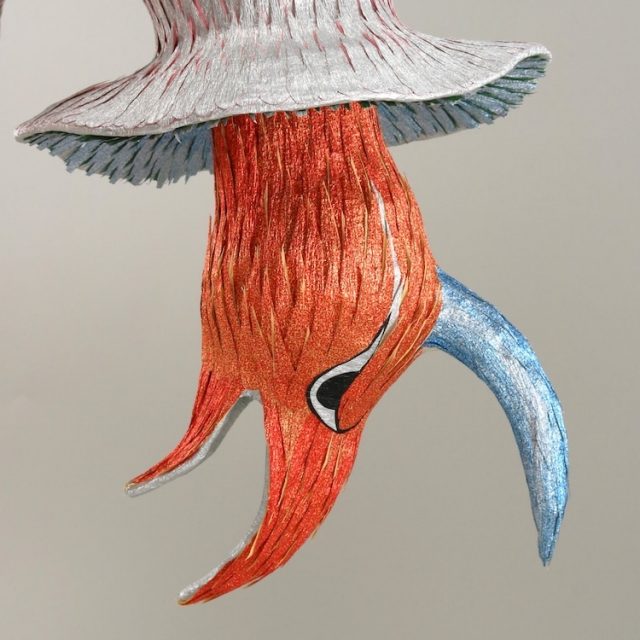
The Garden of Earthly Delights is the modern name for a painting whose original name isn’t now known. It’s actually a triptych, a set of three panels on hinges which can be folded shut.
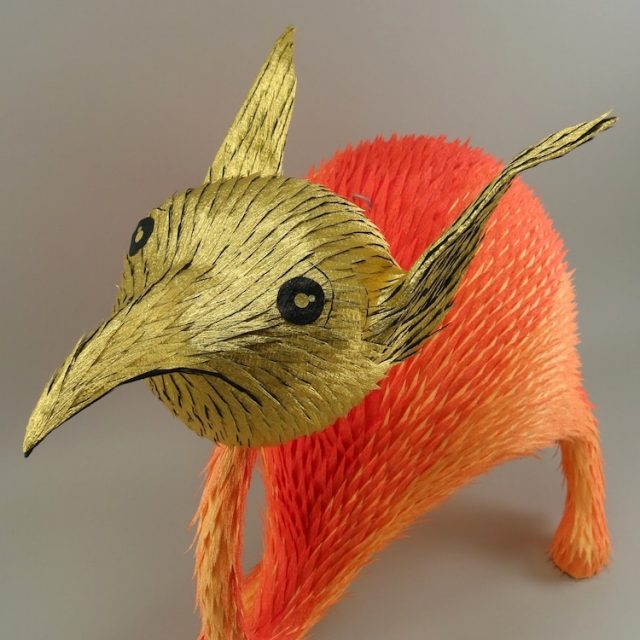
The work is a clear morality tale, showing man’s progression from an initial state of purity and grace, to gaining knowledge of the sensual and earthly, and ultimately, in the third panel, to moral decay and damnation.
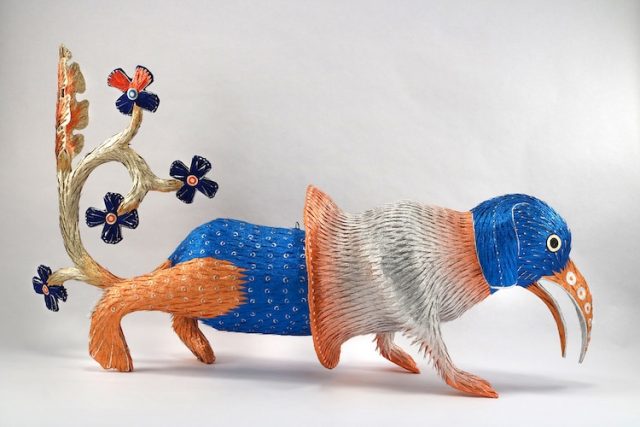
The themes are deeply religious, and the imagery is surreal. It’s full of creatures that are bizarre, grotesque, and often beautiful; those are the images Benavidez draws from.
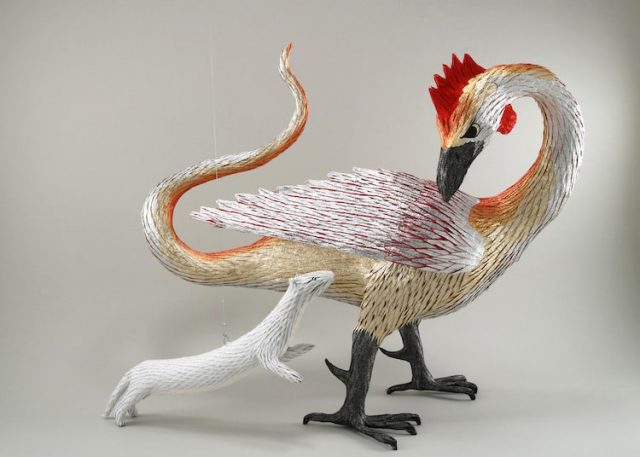
His work is built on a fairly large scale, with some pieces being several feet tall, and are covered in the traditional paper fringing which is the hallmark of the piñata form. He’s likened the layering of the colored paper fringes to blending and layering different colors of paint in a more limited way.
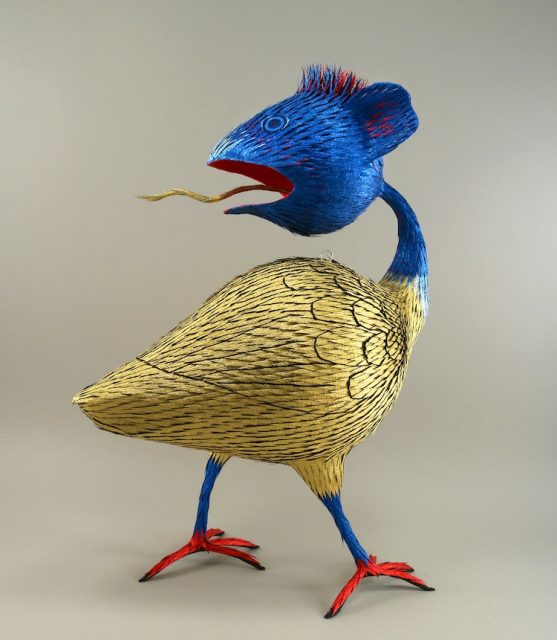
Benavidez said he found himself captivated by the strangeness of the creatures and people and the odd perspective, and he was very drawn to finding a way to turn the flat images into 3D sculptures.
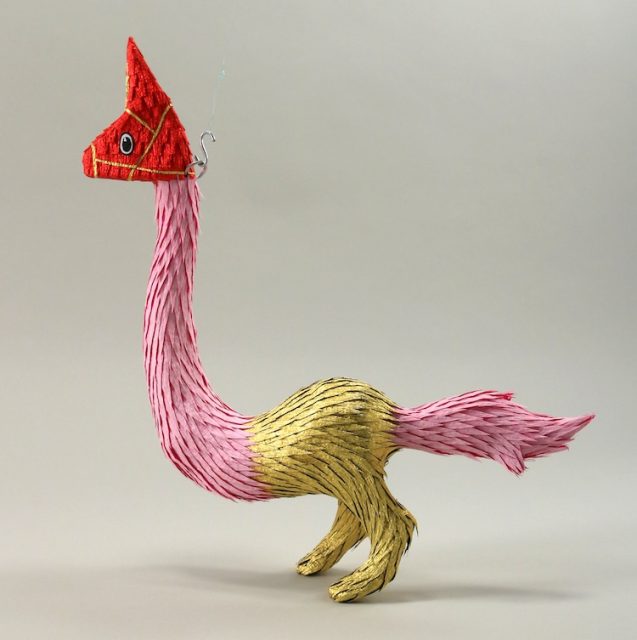
Bosch wasn’t the artist’s only source for his medieval monsters. He’s also taken inspiration from the Luttrell Psalter, which is full of stories of the lives of saints, and the Medieval Bestiary, which is essentially an encyclopedia of various extremely strange medieval beasts and monsters as well as stones and their mystical uses, and also more mundane beasts.
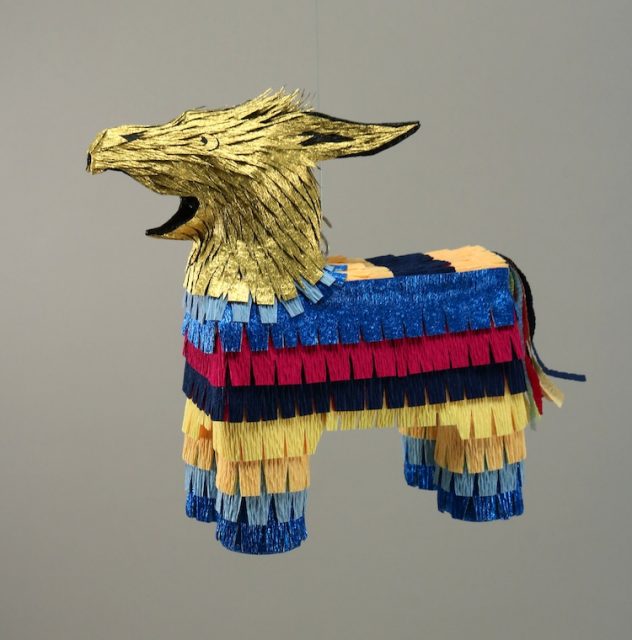
The piñata itself is a form that’s a lot deeper and more complex than just being a child’s birthday party entertainment. Mexconnect.com says that the form may have originated in China.
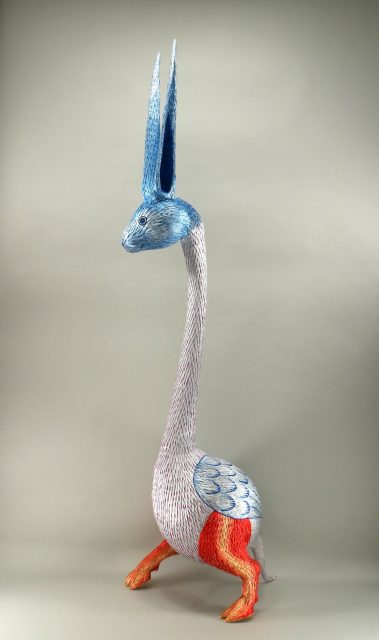
Marco Polo saw that the Chinese made paper covered forms of animals including cows, oxen, and buffalo as part of their New Year rituals. When the animals were hit sufficiently hard with sticks, they ruptured and seeds fell out them. People would then burn what was left and take some of the ashes for good luck.
The custom made its way to Europe in the 1300s as part of the celebration of Lent, and in the early 1500s, Spanish missionaries carried the idea to North America as a tool to aid conversions.
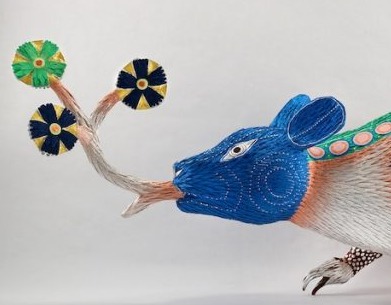
The piñata was said to represent three virtues. First, the blindfolded person holding the stick embodied the faithful fending off the forces of evil (blind faith, get it?).
Next, the hanging piñata symbolizes hope, and, finally, the stick is virtue. The treats inside are the rewards of a holy life and represent charity when divided among all the spectators.
Between the religious undertones of the piñata itself and the medieval monster forms Benavidez employs, he creates a compelling, nearly dream-like, and very complex form of art with deep historical roots.
Read another story from us: Artist Transforms Victorian Portraits into Superheroes
Benavidez’s sculptures will be on display at the Riverside Art Museum in Riverside, CA starting February 2, 2019.
